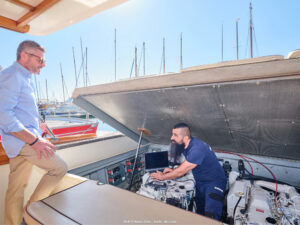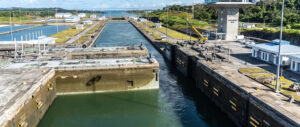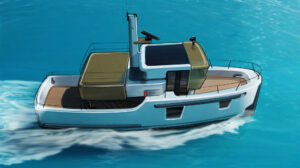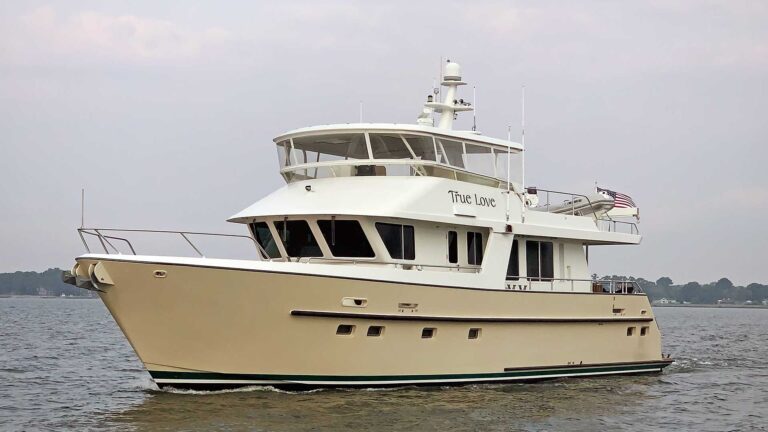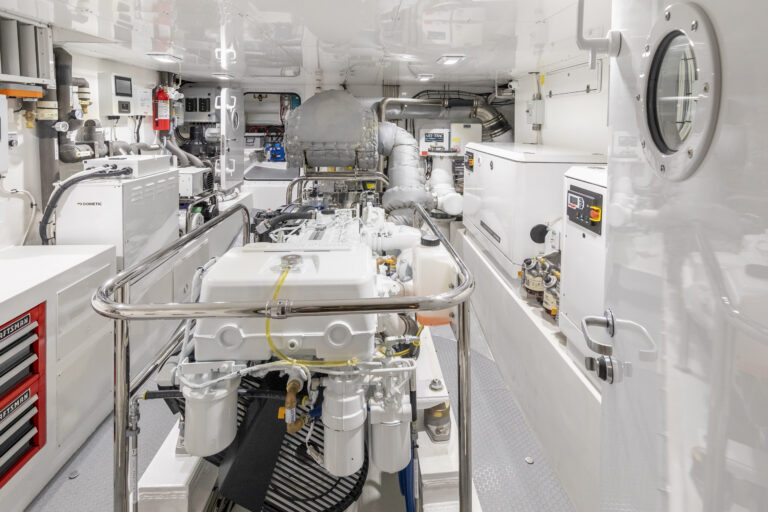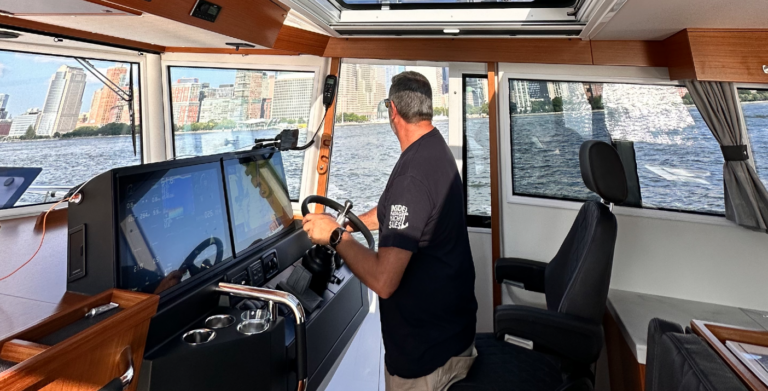Small Wonder
The Seakeeper 1 is the newest and smallest member of Seakeeper’s lineup, and though a smaller model of a product isn’t always exciting, I think the Seakeeper 1 deserves attention. With a $15,000 list price and a target boat size of 23-29 feet, the 1 aims at a high-volume segment of the boating market and brings the price down to about 10-20 percent of the cost of the boat.
I co-chaired this year’s innovation awards at the Miami show where we awarded the Seakeeper 1 the innovation award for mechanical and electrical systems. I think the new design Seakeeper used to simplify installation and bring the cost down deserves recognition.

With the 1, Seakeeper has redesigned several aspects of the stabilizer to make installation easier and cheaper. On the Seakeepers 2 and 3, the units can be mounted directly to the deck of a boat as long as the deck is glued to the stringer system of the boat, which I learned is a common construction technique. But with the 1, they’ve reshaped the flywheel enclosure so that it doesn’t hang below the frame of the unit. This means that the Seakeeper 1 can be installed on the deck of a boat without cutting out the floor below it. The entire unit occupies about the same space as a 65-quart cooler, so it fits under leaning posts, inside of seating and in the cockpit of many boats.

Continuing the theme of simplification, there’s a control panel right on top of the unit to manage the stabilizer. This means it can be controlled without a helm mounted controller, though I suspect most installs will leverage Seakeeper’s MFD integration.
Like the Seakeeper 2 and 3, the 1 is DC-powered, so it can use the alternator output of the engines. It requires 55 amps at startup and I saw about 14 amps used once it spun up. The Seakeeper 1 spins up to stabilizing speed in just 21 minutes and takes 31 minutes to its full 9,750 RPM speed. That’s a significant improvement from previous units, my Seakeeper 9 takes 38 minutes to reach stabilizing speed and 55 minutes for full speed. They’ve also simplified the braking system on the 1, going to a single-cylinder hoseless unit to enable field replacement of the braking system.

I’ve installed a Seakeeper 9 on Have Another Day so I’m quite familiar with the installation process and the impact a gyro can make. But during a ride aboard Seakeeper’s demo boat, I was once again reminded the night-and-day difference a gyro stabilizer can make on the rolling deck of a boat. With the gyro locked (which disables stabilization), the boat pitches in a 2- to 3-foot chop, but seconds after unlocking the unit the boat begins to simply gently move up and down on the water with nearly zero rolling.



